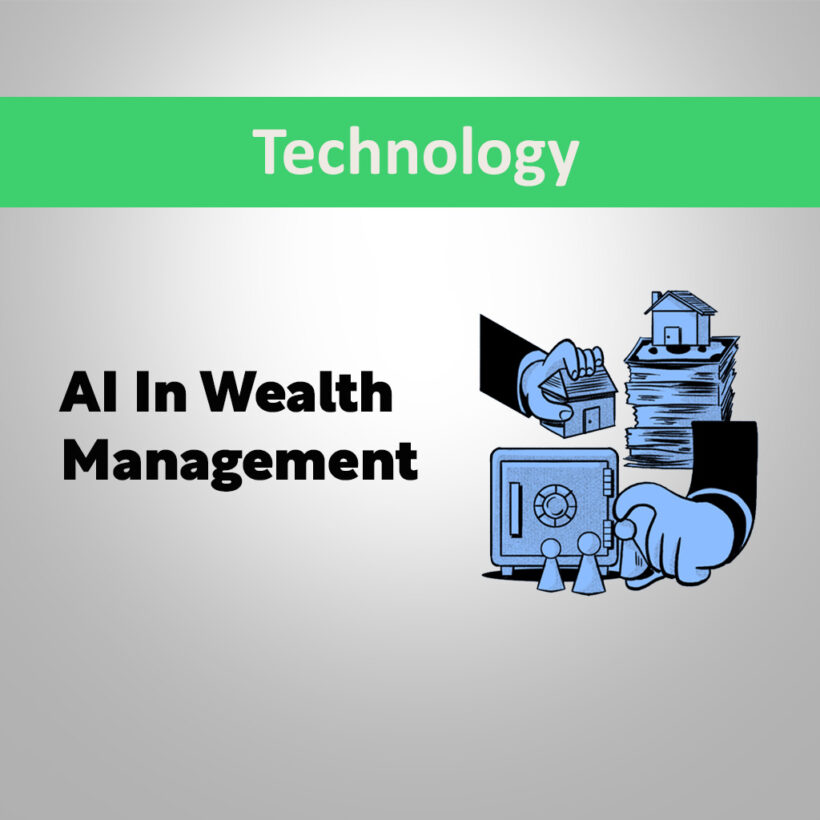In today’s fast-paced landscape, managing wealth has become tougher than ever. There are many people who struggle with financial discipline, often making impulsive spending and investment decisions. Traditional wealth management methods often fall short of addressing these challenges effectively.
The swift development of artificial intelligence (AI) is transforming industries, and wealth management is no different. Those days are gone when financial planners made do with spreadsheets, past information, and gut feelings to inform investment choices. Today, AI is transforming the way people and institutions manage wealth, enabling unparalleled accuracy, personalization, and efficiency. From robo-advisors to predictive analytics, AI-enabled solutions are making cutting-edge financial strategies more accessible to more people while maximizing yields. In this blog, we’ll explore how AI is transforming wealth management, the challenges it presents, and why embracing this technology is key to building a smarter financial future.
1. The Rise of Robo-Advisors: Automating Portfolio Management
Robo-advisors are among the most visible applications of AI in wealth management. These digital platforms use algorithms to create and manage investment portfolios tailored to an individual’s risk tolerance, goals, and time horizon.
Why It Matters:
- Cost Efficiency: Traditional financial advisors charge fees ranging from 1% to 2% of assets under management (AUM). Robo-advisors, like Betterment, often charge less than 0.5%, making professional-grade investing accessible to smaller portfolios.
- 24/7 Availablity: AI systems monitor markets in real time, executing trades instantly to capitalize on opportunities or reduce risks.
2. Personalized Financial Planning at Scale
AI’s ability to process unstructured data—such as social media activity, spending habits, and even health records—enables hyper-personalized financial advice. Machine learning models analyze a client’s unique circumstances to recommend strategies for retirement, education savings, or debt management.
Examples of Personalization:
- Risk Profiling: AI assesses a client’s risk appetite by evaluating past investment behavior, financial goals, and psychological surveys.
- Real-Time Adjustments: If a client’s income changes or a global event impacts markets (e.g., a pandemic), AI instantly recalibrates their plan.
3. Predictive Analytics: Forecasting Markets with Precision
Predictive analytics uses AI to anticipate market trends, find undervalued assets, and maximize portfolio performance. Machine learning models with the aid of historical data, news sentiment, and macroeconomic factors identify patterns not seen by human eyes.
How It Works:
- Sentiment Analysis: Natural language processing (NLP) goes through news articles, earnings calls, and social media to gauge market sentiment. For example, if CEO statements on an earnings call are bearish, AI may identify a possible stock decline.
- Algorithmic Trading: Hedge funds such as Renaissance Technologies employ AI models to make high-frequency trades, producing alpha (above-market returns) even during volatile times.
- Scenario Modeling: The AI runs thousands of market scenarios (i.e., interest rate increases, geopolitical shocks) to stress-test portfolios and suggest resilient strategies.
4. Risk Management and Fraud Detection
AI is a risk-grounder for reducing risks and protecting assets. It identifies anomalies in transactions and market conditions that may reflect fraud or systemic risk through real-time monitoring.
Applications:
- Fraud Prevention: AI detects unusual activity—like sudden large withdrawals or overseas transactions—and alerts users in real time. Mastercard’s AI system, for example, analyzes 1.8 billion transactions monthly to block fraudulent activities andcharges.
- Credit Risk Assessment: Banks use AI to evaluate borrowers’ creditworthiness by analyzing non-traditional data (e.g., rent payments, online behavior).
- Portfolio Stress Testing: AI models simulate “black swan” events (e.g., a recession or cyberattack) to ensure portfolios remain diversified and liquid.
5. Enhancing Client-Advisor Relationships
Contrary to fears about AI taking human advisors’ place, it’s enhancing their roles. Through automated routine work—such as report generation and data entry—AI liberates advisors to invest in high-leverage activities: deciphering client aspirations, giving counsel with compassion, and forming enduring relationships.
Tools Driving Collaboration:
- Chatbots: AI-powered chatbots (e.g., Bank of America’s Erica) answer routine queries instantly, improving client satisfaction.
- Behavioral Insights: AI analyzes communication patterns to help advisors tailor their messaging. For instance, if a client prefers visual data, the advisor can prioritize infographics.
- Performance Reporting: AI generates easy-to-understand reports that highlight progress toward goals, fostering transparency. They are insane.
6. Ethical and Regulatory Challenges
While AI offers immense potential, it’s not without risks. Biased algorithms, data privacy concerns, and regulatory gaps pose significant challenges.
Key Issues:
- Algorithmic Bias: When trained on past data representing inequalities in society, AI can reinforce inequalities (e.g., not giving loans to underprivileged communities).
- Data Security: Wealth managers need to safeguard client information—particularly sensitive financial data—from intrusions.
- Regulatory Compliance: Governments are racing to come up with regulations on AI. The EU’s GDPR, for example, requires transparency on automated decision-making.
7. The Future of AI in Wealth Management
The next decade will see AI become even more integral to wealth management:
- Quantum Computing: Higher processing capabilities will facilitate instant analysis of global markets.
- Blockchain Integration: Artificial intelligence coupled with blockchain may make smart contracts automatic and add transparency.
- Personalized AI Assistants: Picture a voice-controlled AI that invests for you, pays bills, and negotiates loan terms.
However, human oversight will remain critical. The ideal future blends AI’s analytical prowess with human creativity and ethical judgment.
Conclusion: Embracing the AI-Driven Wealth Revolution
AI is not a passing fad—it’s the foundation of wealth management in the modern age. Through automated tasks, insight discovery, and access democratization to financial expertise, AI enables people to make better, fact-based choices. But it takes success in achieving balance between innovation and accountability. Investors and companies need to emphasize transparency, security, and inclusion to ensure AI serves everyone involved.
As we move forward, one thing is certain: those who master AI’s power today will be in the strongest position to succeed in the financial world tomorrow. Whether you’re a seasoned money manager or just beginning, the moment to adopt AI-driven wealth management is now.


